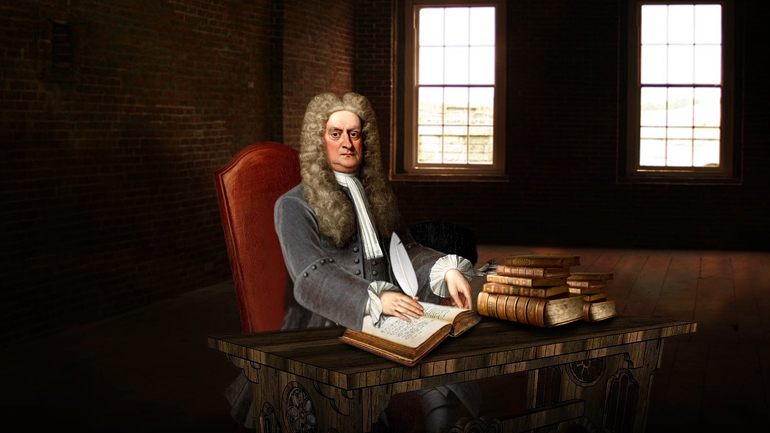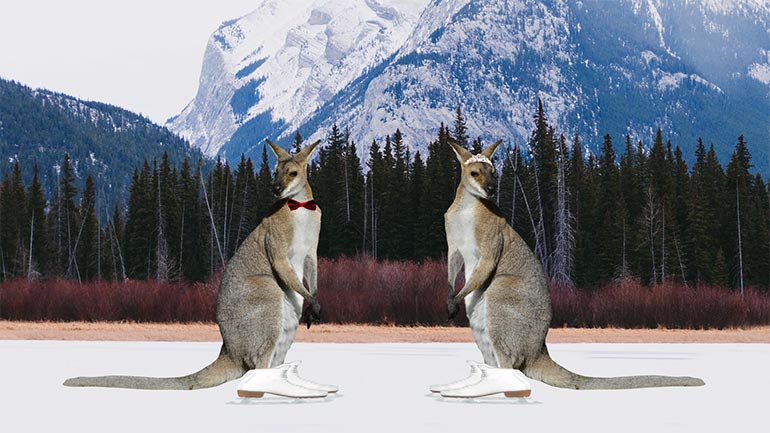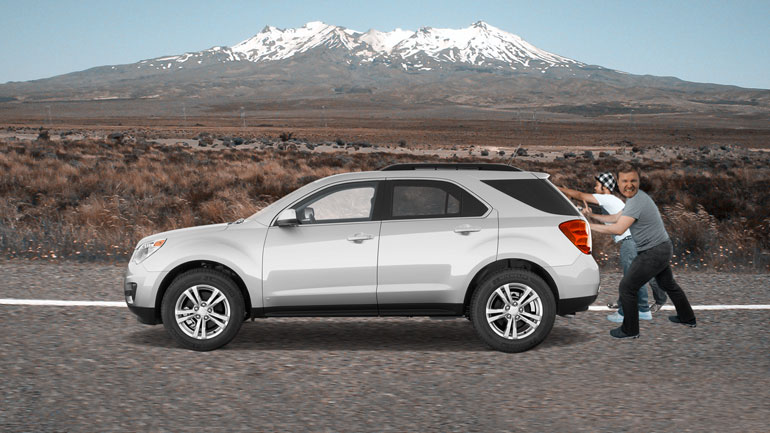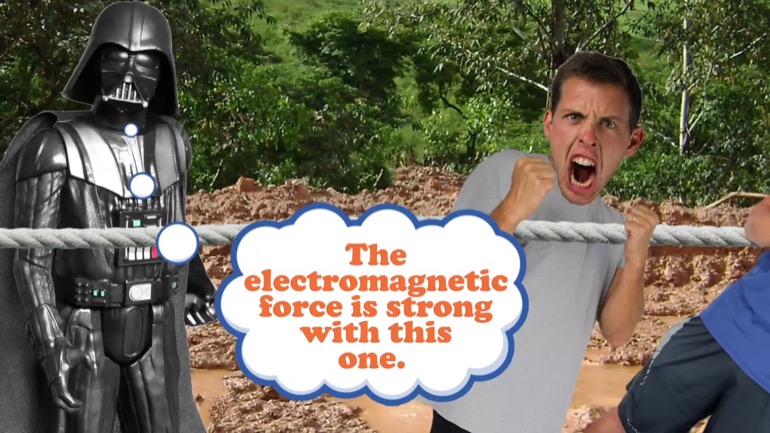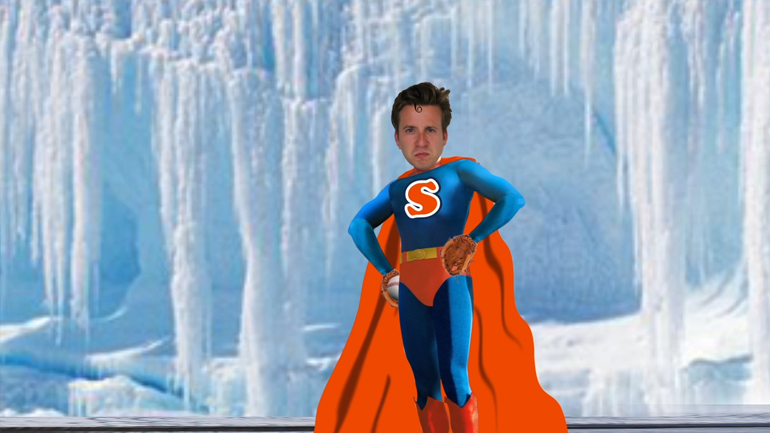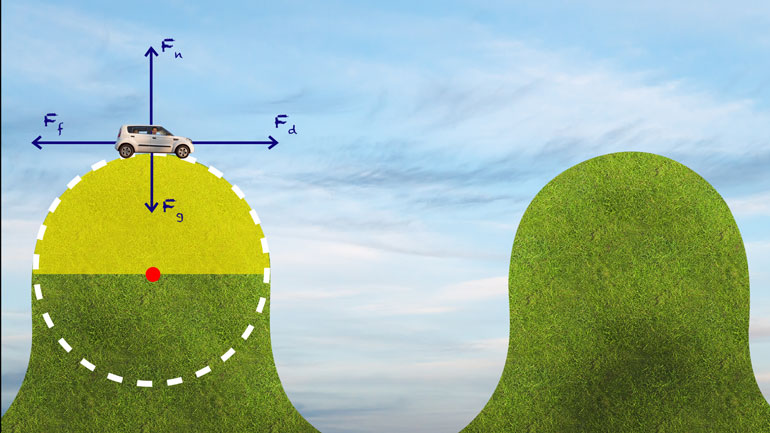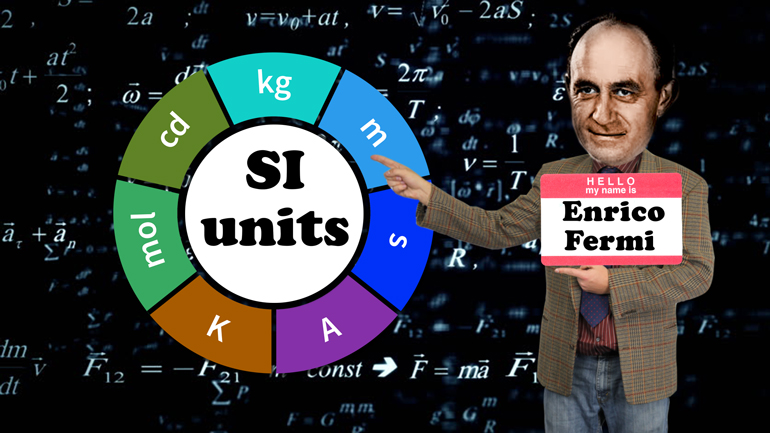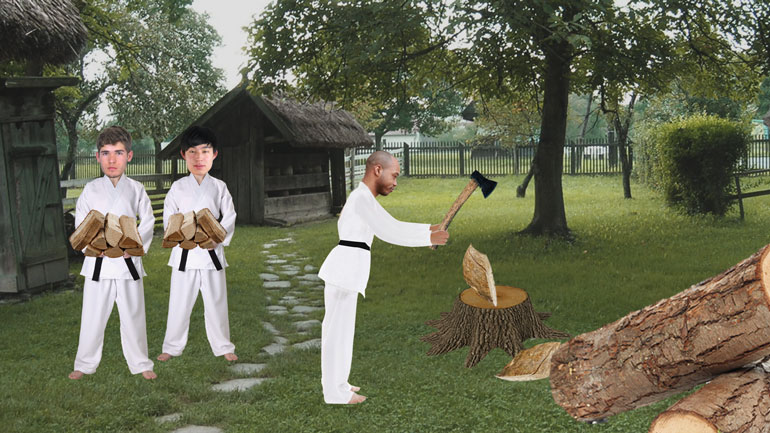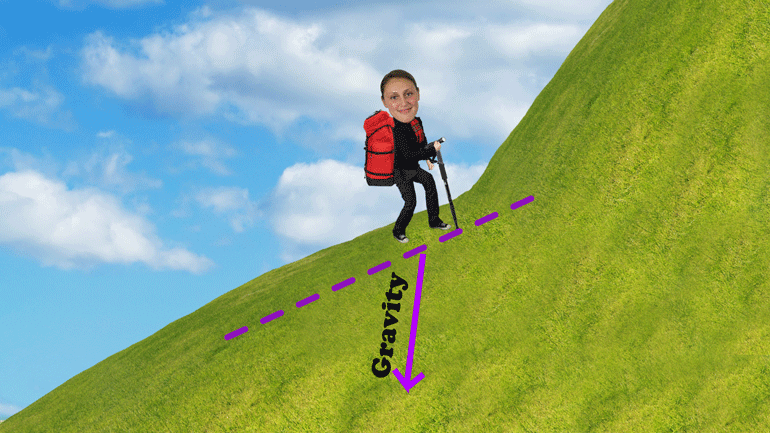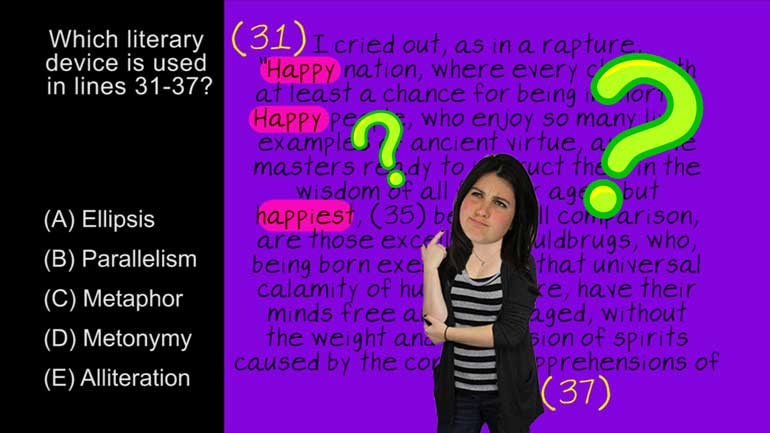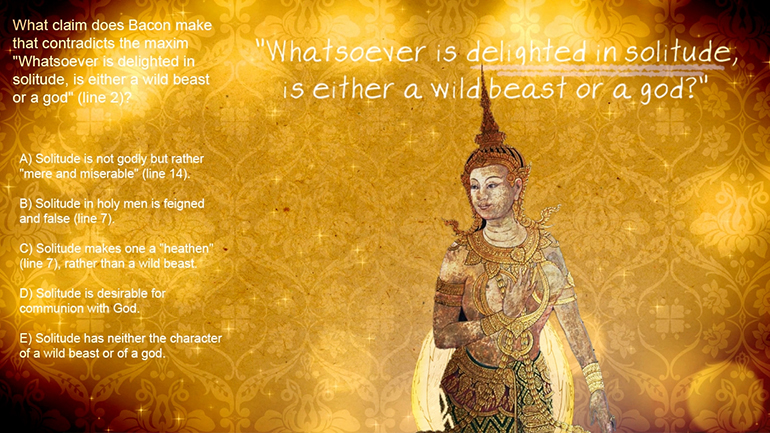ShmoopTube
Where Monty Python meets your 10th grade teacher.
Search Thousands of Shmoop Videos
Physics Videos 34 videos
Isaac Newton. Who was he? Why do we need to know about him? In a physics course, no less? Well, he's only the most famous physicist in history, and...
What are the basics of trigonometry? And why are we learning about this in a physics course? Both good questions. In this video, you'll learn about...
It's time to make our liters and meters work together. Enough of the bickering, right? In this video, we'll do some unit analysis, covering SI Unit...
Physics: Scalars vs. Vectors 38 Views
Share It!
Description:
Scalars v. vectors. Speed v. velocity. Distance v. displacement. Kramer v. Kramer. We'll cover all the big smackdowns.
Transcript
- 00:01
No steelers versus vectors battle royal citizens for replacement with
- 00:09
ten grand just like we can't be negative displacement can
- 00:14
be his basement requires direction that's considered positive there's in
- 00:18
victor's a numerical value on it so one dimensional vectors
- 00:24
have value for magnitude and direction that's philosophy inspector uses
Full Transcript
- 00:31
displacement average last year a single more fun with units
- 00:39
you need to be the same when adding subtracting easy
- 00:42
when using metric system imperial system in it so easy
- 00:45
for you nick Using a girl all right let's do
- 00:47
this physic can be tough right Lots of setting up
- 00:51
experiments tracking data and crunching numbers we think it's time
- 00:55
to take a vacation off on a plane find a
- 00:58
nice beach somewhere ten thousand kilometers away that's the life
- 01:04
but sadly all the occasion must end and we've got
- 01:07
to come back to the real world so here's a
- 01:09
question How far did we travel Sure we can say
- 01:13
the total distance traveled with twenty thousand kilometers but we're
- 01:16
back where we started So in the long run was
- 01:19
there any real change in our position Yep There's physics
- 01:23
making stuff complicated again Sadly we don't actually get to
- 01:26
go to the beach but our imaginary trip lets us
- 01:29
look at the difference between distance and displacement know you
- 01:32
may have heard about displacement in terms of a submerged
- 01:36
object displacing fluid but it means something totally different here
- 01:40
Distance is pretty understandable We talked about distance all the
- 01:43
time like if we run a ten k race even
- 01:45
if we go in a circle and end up back
- 01:47
where we started we still ran ten kilometers are fitness
- 01:51
tracker wouldn't lie to us so distance is just a
- 01:53
measurement The total amount traveled but displacement is different displacement
- 01:58
measures how far we are from a c starting point
- 02:01
So if you run that ten k and finished back
- 02:03
at the starting line are displacement is in ten kilometers
- 02:07
in fact it zero kilometers no matter how sweaty we
- 02:11
might be and what would our displacement be past the
- 02:14
finish line In other words behind the starting point in
- 02:18
that case are displacement would have a negative value It
- 02:21
really depends on which direction we've chosen to be positive
- 02:24
when we're setting up a vector map we can think
- 02:27
of ourselves as an observer and will pick which direction
- 02:30
To face an emotion going in the same direction we're
- 02:33
facing will be positive and in emotion in the other
- 02:36
direction will be negative now in america distance can never
- 02:40
be negative There's no such thing as a negative ten
- 02:42
k even if he ran backwards Distance is a scaler
- 02:46
measurement A scaler quantity is something that has a numerical
- 02:50
value known as magnitude Think wait or area or value
- 02:55
or flying ten thousand kilometers and back anything that could
- 02:58
be quantified as just a number vectors are different Vector
- 03:03
is a measurement that has both of value and a
- 03:06
direction that covers things like heat flow or forces or
- 03:10
you guessed it displacement so on our vacation are total
- 03:14
displacement by the end of the round trip would be
- 03:17
nothing zilch Zero nothing to show for it but beach
- 03:21
sell fees vectors can depend on who's doing the measurement
- 03:24
also like if we're playing catch with a friend when
- 03:28
you throw the ball it's moving at a certain speed
- 03:30
away from you and that would be positive velocity relative
- 03:34
to your position But it's coming right at your buddy
- 03:38
and at a negative velocity relative to his position so
- 03:42
he better be paying attention You want to avoid stopping
- 03:45
any velocity with your face doing that with scaler quantities
- 03:49
is easy Since a scaler is the same thing as
- 03:52
a number we can just add subtract divide you name
- 03:55
it Math with vectors can get tricky though you can't
- 03:58
really multiply up times left For example For now we'll
- 04:02
stick with one dimension of movement and we'll dig into
- 04:05
the multidimensional stuff later Because vectors involved movement we usually
- 04:10
see them drawn as an arrow The length of a
- 04:12
narrow indicates the vectors magnitude and the direction of the
- 04:16
arrow indicates well the direction of the vector here's an
- 04:19
example of a vector diagram of an airflow We can
- 04:22
see that there are different directions for the force is
- 04:25
involved and we can see that there's a pattern to
- 04:27
the forces Also we can see that we need to
- 04:30
find a basement and hunger down How can we tell
- 04:33
that something in an equation is a vector Usually it'll
- 04:36
have a narrow over it like this Otherwise you might
- 04:39
see it written in italics or bold it and sometimes
- 04:42
we might see a plus or minus sign in front
- 04:44
Of a number Just make sure that when you're writing
- 04:46
a vector make it clear jesse's distance and displacement are
- 04:50
related so our speed and velocity the difference velocity is
- 04:54
a vector quantity and speed is a scaler meaning velocity
- 04:58
has a direction and the equations to calculate them are
- 05:01
almost the same too Speed equals the change in distance
- 05:05
over the change in time's and velocity equals the change
- 05:09
in displacement over the change in time Distance is always
- 05:14
a positive number so speed is always positive too Like
- 05:17
in the real world you can't travel backwards in time
- 05:19
When sheldon comes up with something to time travel then
- 05:22
we can revisit the negative sign their velocity Now it
- 05:25
can be negative if the displacement is negative When we're
- 05:29
dealing with displacement we always have to make sure that
- 05:31
we're paying attention to the starting value because displacement doesn't
- 05:34
have to start at zero let's say your dog is
- 05:37
hanging out in the park right Oh spots a squirrel
- 05:39
twenty meters away and it's on mr squirrel makes a
- 05:42
dash for the tree forty meters away from fido and
- 05:46
it's a lucky day for the rodent who gets there
- 05:47
Just before the pooch and we'll say it took them
- 05:50
both about five seconds Calculating the velocity for your dog
- 05:53
would be pretty straightforward The change in distance is forty
- 05:56
meters and the change in time is five seconds His
- 05:59
velocity for this strip would be eight meters per second
- 06:02
But the squirrel is slower because from the start he
- 06:06
already had a displacement of twenty meters relative to your
- 06:09
best friend So we have to subtract the initial displacement
- 06:13
from the final displacement and we've got to remember to
- 06:15
do that any time the initial displacement isn't zero so
- 06:19
when we do the math we find that the squirrels
- 06:21
velocity is four meters per second and yet he still
- 06:24
has the gall to taunt fire just like velocity can
- 06:27
change based off of our position The value of velocity
- 06:30
can change based off of what we're looking for like
- 06:33
average versus instantaneous For example let's go backto our plane
- 06:37
trip How far away did we say that Beach wass
- 06:40
ten thousand kilometers that's about the distance from los angeles
- 06:43
to new zealand So let's say it takes us fifteen
- 06:46
hours to get there That means our velocity for the
- 06:48
whole trip would average ten thousand kilometers divided by fifteen
- 06:51
hours or about six hundred sixty seven kilometers per hour
- 06:54
to the southwest But what if we have to stop
- 06:57
in fiji to re fuel What would our velocity be
- 07:00
at that point in time It would be zero in
- 07:03
no direction at all Just sitting on the tarmac playing
- 07:07
candy crush for the twelve straight our that's the difference
- 07:10
between average velocity and instantaneous velocity average velocity covers the
- 07:14
whole time period Instantaneous philosophy is just for one moment
- 07:18
in the time period both are useful We just need
- 07:21
to make sure we know which one we're looking for
- 07:24
When it comes to velocity It's also important to know
- 07:26
the difference between constant and average let's say instead of
- 07:30
having to re fuel were able to catch a nonstop
- 07:32
flight instead and just help ourselves think we'll say this
- 07:36
is a magic plane that always has the exact same
- 07:38
velocity Let's say that eight hundred kilometres to the southwest
- 07:42
what's our velocity an hour into the flight eight hundred
- 07:45
kilometres at our nine Yep That's right Eight hundred Constant
- 07:50
velocity means that at any point in time the total
- 07:53
change in displacement divided by the total change in time
- 07:56
will equal the same number as we've seen that's not
- 08:00
necessarily the case for average velocity Okay so let's put
- 08:03
some of this speed of velocity step to the test
- 08:06
with something that's a little less straightforward literally lets say
- 08:09
its errand day we need to go to the grocery
- 08:12
store and grab a few things The grocery store is
- 08:14
five kilometers to the west of our house and it
- 08:17
takes us ten minutes to get there nothing but green
- 08:19
lights for this trip but all that shop and makes
- 08:21
us hungry So instead of going home we get some
- 08:24
tacos from our favorite taco joint that's two kilometers to
- 08:27
the east of our house This part of the trip
- 08:29
from the store to our delicious snack takes twelve minutes
- 08:33
and we're going to say that east is the positive
- 08:35
direction for all this Now we can run some numbers
- 08:38
and we want those numbers to be in terms of
- 08:40
meters seconds and meters per second We're going to find
- 08:43
out the average velocity for the first part of the
- 08:45
trip the average speed for the first part of the
- 08:48
trip the distance for the whole trip the displacement for
- 08:51
the whole trip and the average velocity and average speed
- 08:54
for the whole thing too got it So the first
- 08:57
part of the trip took us five kilometers to the
- 08:59
west over ten minutes remember the equation for velocity is
- 09:02
this velocity equals the final displacement minus the initial displacement
- 09:07
over the final time minus the initial time and since
- 09:10
we want are answers to be in meters per second
- 09:12
let's do our conversion now before we forget so we'll
- 09:15
change five kilometres to five thousand meters and ten minutes
- 09:18
to six hundred seconds and because east is our positive
- 09:21
direction that makes west the negative direction since our starting
- 09:25
displacement and starting time we're both zero now our equation
- 09:29
looks like this velocity equals negative five thousand meters minus
- 09:33
zero meters divided by six hundred seconds meaning our velocity
- 09:37
for the first part of trip was negative Eight point
- 09:40
three three meters per second as far as our speed
- 09:43
Well the distance is the same as the displacement for
- 09:45
this first leg of our journey and we've already done
- 09:48
the math since distance can't be negative we don't have
- 09:51
to change it to positive easy enough that makes our
- 09:54
average speed for this part eight point three three meters
- 09:56
per second now let's go to the displacement for the
- 09:58
whole trip displacement equals the final displacement minus the starting
- 10:02
replacement pretty simple our final taco based displacement was two
- 10:07
kilometers in the positive direction starting displacement a big fat
- 10:10
zero but we still want to work in terms of
- 10:12
meters so we've got two thousand meters on her hands
- 10:15
or to put it scientifically to point zero zero times
- 10:18
ten to the third meter's distance involves a little more
- 10:21
attention because we've got to account for all the ground
- 10:24
we covered So at the start we went five kilometers
- 10:26
west and we ended up with two kilometers to the
- 10:29
east of our starting point meaning the second part of
- 10:32
our trip covered seven kilometers adding it up we find
- 10:35
a total distance of twelve kilometers also known as one
- 10:38
point two zero times ten to the fourth meters using
- 10:42
the right amount of sig six that's a big difference
- 10:44
from the displacement isn't it We're moving right along here
- 10:47
huh We might not even have time for a second
- 10:50
Round of taco goodness let's calculate the average velocity for
- 10:53
our trip We said the total displacement was two thousand
- 10:56
meters now we need the total time The second part
- 10:59
of the trip took twelve minutes which is seven hundred
- 11:01
twenty seconds Add that to the six hundred seconds the
- 11:04
first leg took us on Our total travel time was
- 11:07
one thousand three hundred twenty seconds Divide displacement by time
- 11:11
and we have an average velocity of one point five
- 11:13
two meters per second The equation for speed is total
- 11:17
distance divided by time A total distance Twelve thousand meters
- 11:21
total time is still one thousand three hundred twenty seconds
- 11:24
Do the division and we get an average speed of
- 11:26
nine point zero Nine meters per second huh Our speed
- 11:30
is a lot more impressive than our velocity So even
- 11:32
though the two words might mean the same thing in
- 11:35
the non physics world when it comes to science speed
- 11:37
and velocity can be very different As we worked on
- 11:40
this problem you saw that we had to convert units
- 11:43
Luckily a lot of the conversion was kilometers two meters
- 11:46
conversion in the metric system is super easy because it's
- 11:49
usually just a matter of changing the order of magnitude
- 11:52
but in america we still use the imperial system most
- 11:55
of the time which is a little bit less intuitive
- 11:58
Twelve inches in a foot five thousand two hundred eighty
- 12:00
feet in the mile Nothing intuitive about that at all
- 12:04
It's like a bunch of old english guys just threw
- 12:06
darts at some numbers to come up with these measurements
- 12:09
Yeah that story about a king using his foot to
- 12:11
come up with the measurement for an official foot old
- 12:14
wives tale Not really So we need a more intuitive
- 12:17
way to handle these conversions One way to help ourselves
- 12:19
out is by using a grid let's say we want
- 12:21
to convert twenty five miles per hour two meters per
- 12:24
second The first part of our grid will look like
- 12:26
this We're going to be using multiplication and division in
- 12:29
this process so we'll put the things we multiply on
- 12:32
top of the grit and the things we're going to
- 12:34
divide on the bottom So let's focus on the our
- 12:37
unit because we're going to be dividing that bad boy
- 12:40
The first step to get two seconds is to divide
- 12:43
An hour in two minutes will add a new section
- 12:46
to our grid and put one hour on top and
- 12:48
sixty seconds on the bottom Then we'll attack more to
- 12:51
the grid and split a minute into sixty seconds Okay
- 12:55
so we've got into one of the units we need
- 12:57
to do this Conversions let's go after meters now there's
- 13:00
about one point six kilometers for each mile we'll throw
- 13:04
that onto the grid also Now we just have to
- 13:06
break up a kilometer and two meters and there are
- 13:09
precisely one thousand meters in each kilometre looking at our
- 13:13
grid it looks like one big division problem We've got
- 13:16
our dividend on top and our divisor on the bottom
- 13:19
So how about we put together an equation We'll apply
- 13:22
all the numbers on the top and multiply all the
- 13:25
numbers on the bottom leading us with forty thousand meters
- 13:28
on top and three thousand six hundred seconds on the
- 13:31
bottom Doing that last piece of division we find that
- 13:34
twenty five miles per hour equals eleven point one meters
- 13:37
per second We do have to take the conversion step
- 13:39
by step and step by step would probably convert about
- 13:42
half a meter per second Sorry i want to get
- 13:45
started with the conversion stuff It can be pretty hard
- 13:47
to stop So just remember speed and velocity Make sure
- 13:50
you're choosing the right one for whichever problem you're trying
- 13:52
to solve just like distance and displacement speed and velocity
- 13:55
related But they're not the same Kind of like you
- 13:58
and your family except for that one year and there 00:14:02.064 --> [endTime] is no way you share any dna with her
Related Videos
When you're about to marry the love of your life, not many things could stop you. However, finding out that your future hubby is keeping his crazy...
Here at Shmoop, we work for kids, not just the bottom line. Founded by David Siminoff and his wife Ellen Siminoff, Shmoop was originally conceived...
ACT Math: Elementary Algebra Drill 4, Problem 5. What is the solution to the problem shown?
AP® English Literature and Composition Passage Drill 1, Problem 1. Which literary device is used in lines 31 to 37?
AP® English Literature and Composition Passage Drill 2, Problem 1. What claim does Bacon make that contradicts the maxim "Whatsoever is delig...
